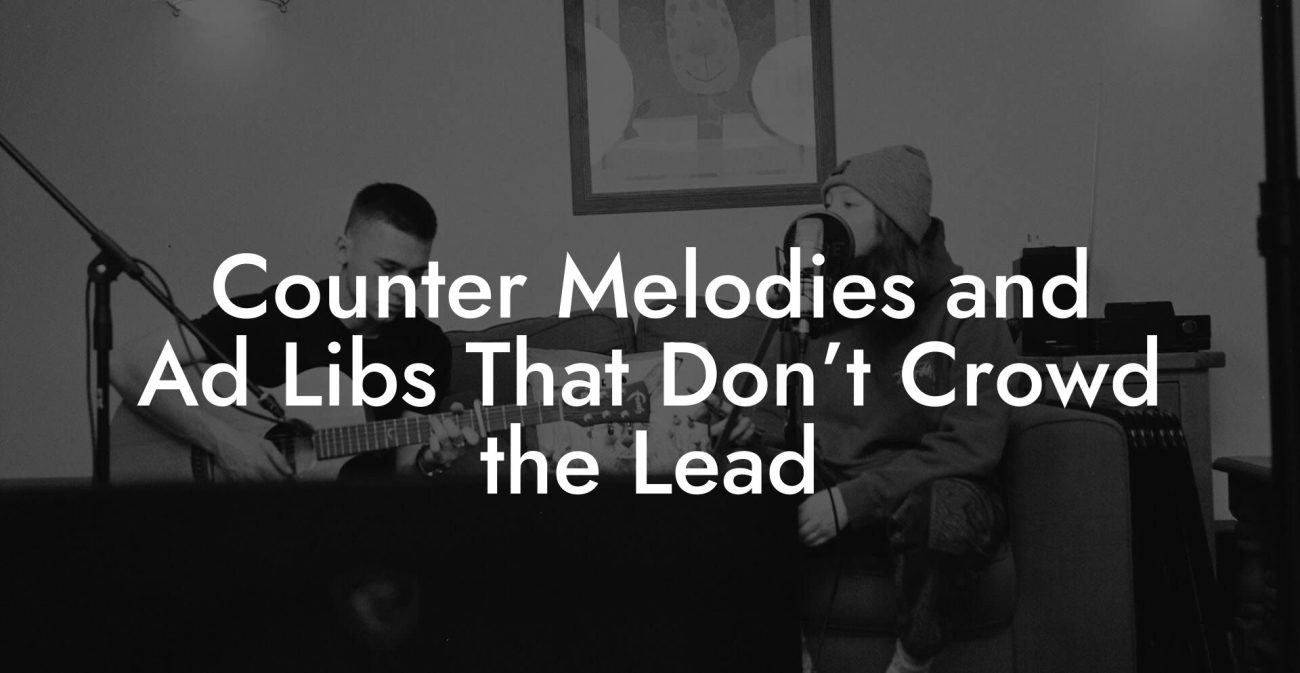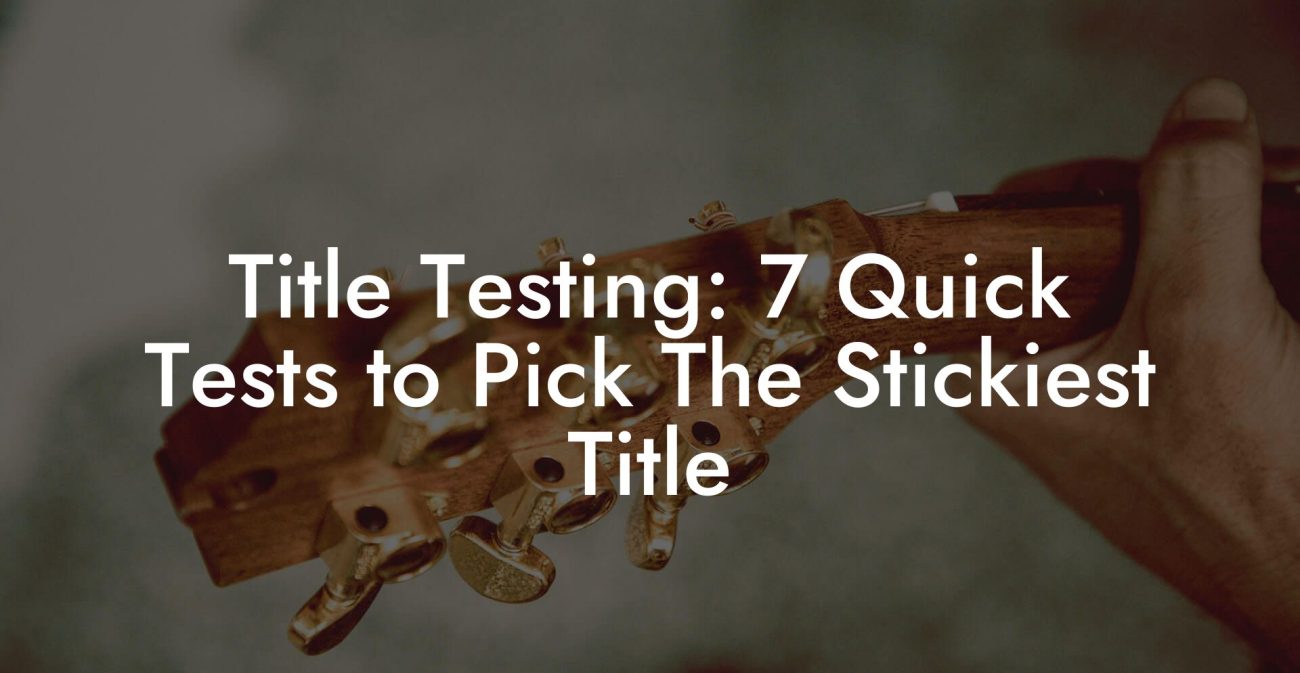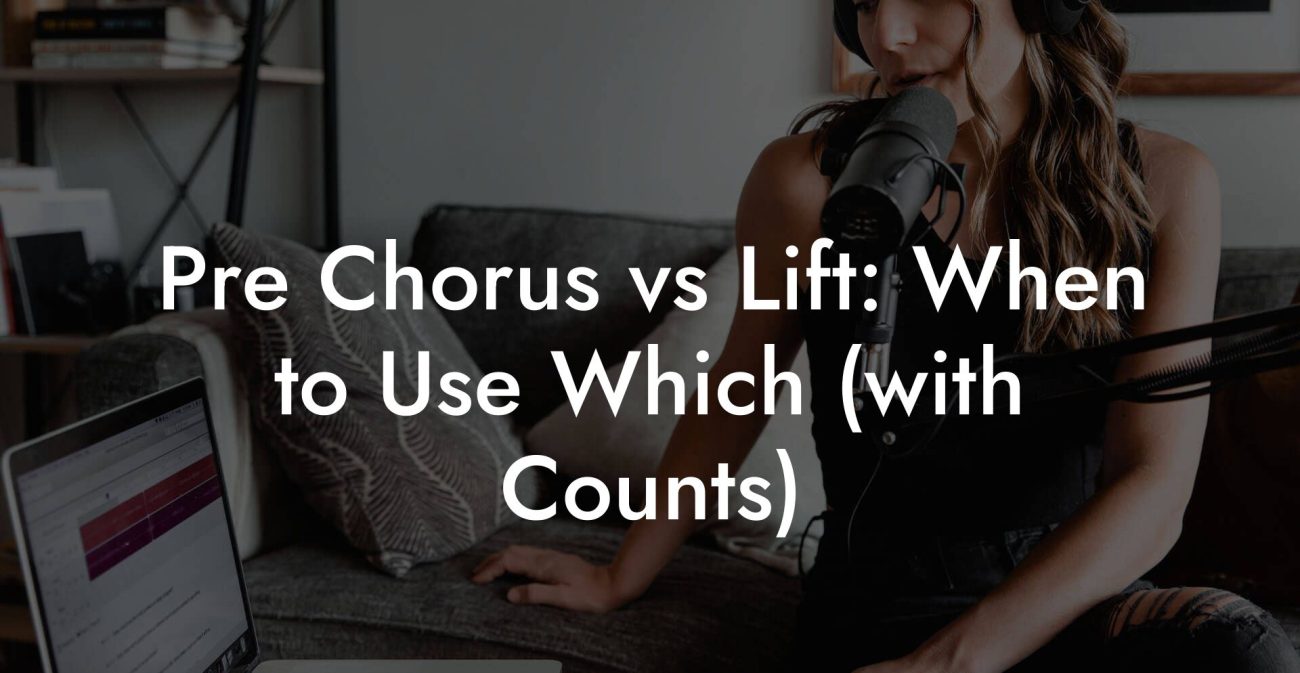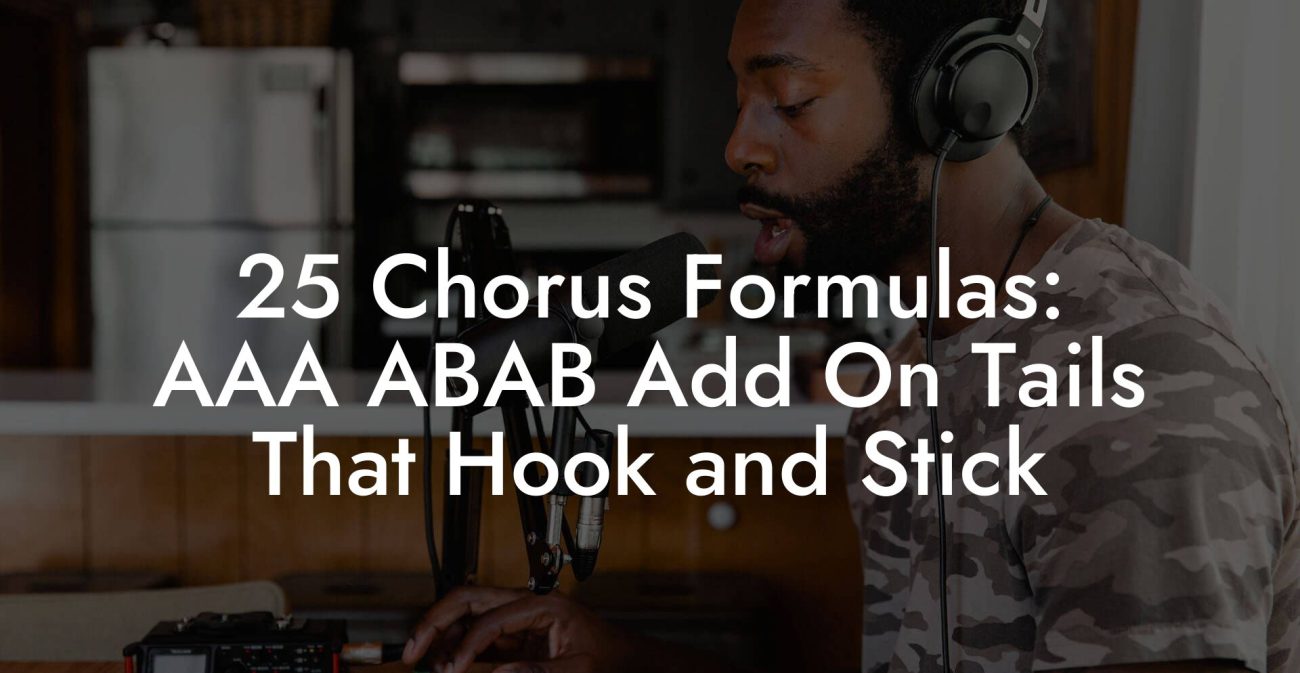Songwriting Advice
Hooks that Convert: Brain Science Behind Earworms
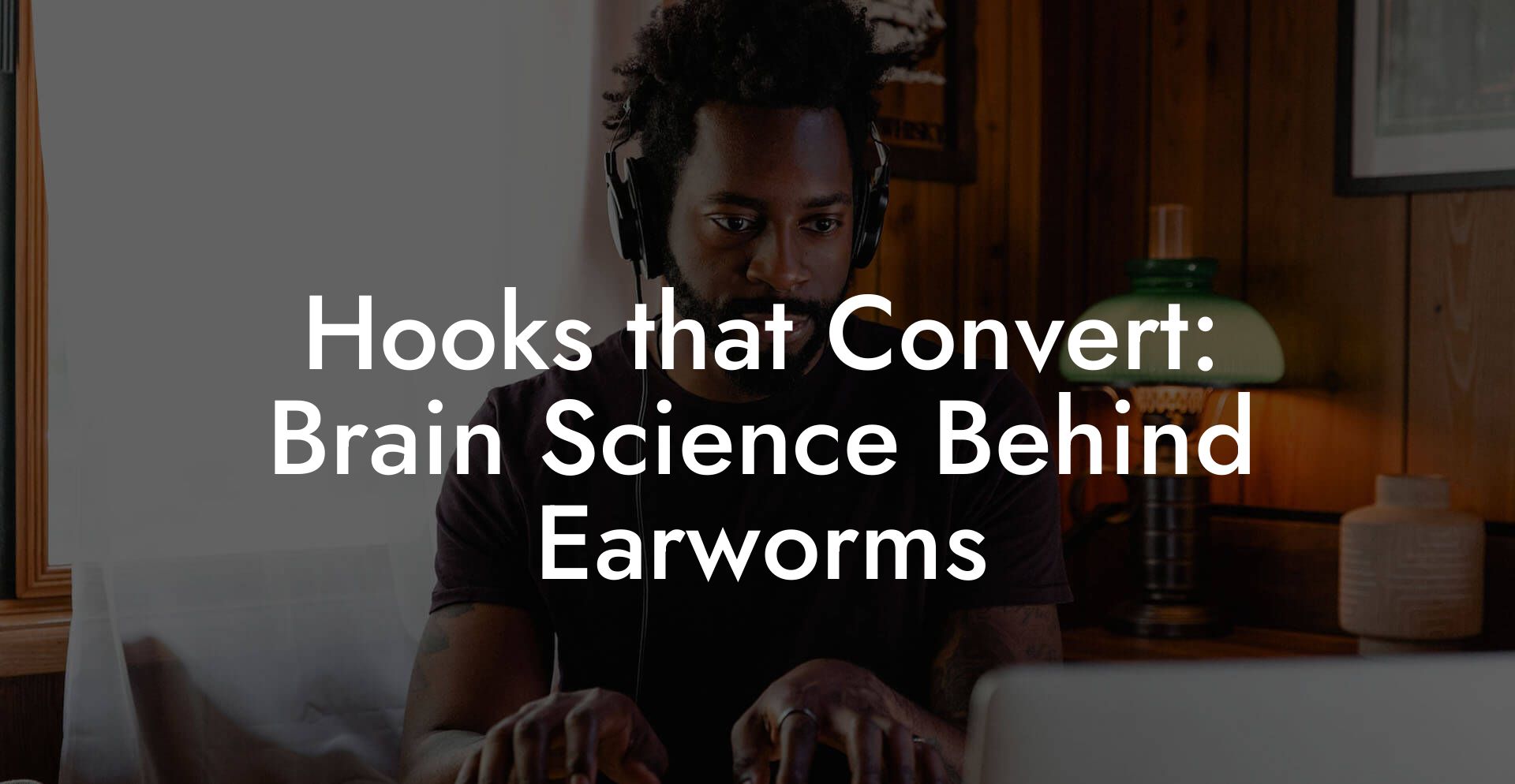
Want a hook that refuses to leave the listener alone? You want a chorus that the crowd hums on the train. You want a tiny melodic tumor of joy that lodges itself in people and demands another stream. This guide explains why some hooks become earworms and others get swiped left by the brain. We will translate science into songwriting moves you can use today. Expect explanations, weird brain facts, exercises, and a ruthless checklist that makes hooks impossible to ignore.
Quick Interruption: Ever wondered how huge artists end up fighting for their own songs? The answer is in the fine print. Learn the lines that protect you. Own your masters. Keep royalties. Keep playing shows without moving back in with Mom. Find out more →
Quick Links to Useful Sections
- What is an earworm and why you care
- Basic brain wiring for music memory
- Why some hooks convert and others die quietly
- Elements of a hook that convert
- Simplicity and repetition
- Predictability plus surprise
- Rhythm and motor coupling
- Prosody alignment
- Emotional core and imagery
- Vocal texture and imperfection
- Title anchoring
- How the brain actually locks a hook into memory
- Attention
- Encoding
- Consolidation
- Retrieval
- Practical writing tactics you can use right now
- Vowel first pass
- Title ladder
- Rhythm stamp
- Micro surprise swap
- Call and adopt
- One word hook
- Vocal signature
- Production moves to amplify hooks
- Testing hooks like a scientist and an asshole
- Common mistakes and fixes
- Case studies broken down into brain friendly pieces
- Case pattern one: One word title on a long note
- Case pattern two: Rhythmic pocket plus micro surprise
- Case pattern three: Imagery plus ownership
- Checklist to craft hooks that convert
- Action plan for your next hook session
- FAQ
Everything here is written for creators who want results fast. No fluff. No fake academic tone. Just rock solid brain science explained like a friend who stole your last slice of pizza. We will cover how memory works for music, what makes repetition useful instead of boring, the shock and reward trick that sneaks a line into the listener, and production moves that make your hook sticky in streaming playlists and short form video. You will leave with concrete drills and instant fixes you can test on your next demo.
What is an earworm and why you care
An earworm is a short musical idea that repeats involuntarily inside the mind. Scientists call the phenomenon involuntary musical imagery which is often shortened to IMI. Say that out loud to impress your neuroscientist friends. The listener hears a fragment and then that fragment keeps replaying without the conscious decision to do so. It can be annoying. It can be delicious. As a songwriter, earworms are your secret currency. They create repeat listens, social sharing, and that strange advertising grade recall that moves people to search and stream.
Real world scenario: You write a chorus with a three word title and a memorable melodic leap. Someone hears it in a coffee shop. Later on their commute they find themselves humming those three words and then they open the app and press play. That is conversion. Hooks that convert multiply into streams shares and playlist saves. That translates directly into algorithmic momentum and more people hearing your face at 2 a.m. on a sweaty festival stage.
Basic brain wiring for music memory
Music uses many brain systems at once. The ear sends sound to the auditory cortex which analyzes pitch and timbre. Memory regions like the hippocampus help attach a melody to context and time. Reward regions like the nucleus accumbens and dopamine pathways make certain patterns feel good to repeat. Motor areas can couple rhythm to movement so a beat feels like it wants to be tapped or synced with a foot. In plain words each catchy hook is a multi team brain takeover. You get the auditory folks the memory folks the reward folks and the body movers all agreeing that this snippet is worth saving and rehearsing mentally.
Quick glossary
- Auditory cortex is where the brain analyzes pitch rhythm and timbre.
- Hippocampus helps form new memories so music attaches to time and place.
- Dopamine is the brain chemical that rewards accurate prediction and pleasant surprises.
- Involuntary musical imagery IMI is the scientific name for songs stuck in the head.
Why some hooks convert and others die quietly
Conversion is memory plus motivation. A hook must be memorable so the listener can reproduce it later. It must be motivating so the listener wants to reproduce it and then open the app to hear more. The factors that favor this are simplicity repetition a small surprise perfect prosody personality and perceived ownership. Perceived ownership means the listener feels like the hook fits their voice or mood so they adopt it like a tiny badge.
Imagine two hooks. One is complicated with long words and a melody that sits in an awkward middle range. The other is a short phrase on a singable interval with a small twist in the second line. The brain prefers the second because it is easier to encode and offers a micro reward when the twist resolves. That micro reward is what keeps the phrase playing in the mind.
Elements of a hook that convert
Below are the practical levers you can control. Each one ties to a brain mechanism so the advice is not aesthetic vaporware.
Simplicity and repetition
Short repeated phrases are memory friendly. The brain does chunking. Chunking means we compress repeated patterns into single memory units. A simple line repeated three times is easier to chunk than three different complex lines. If you want a listener to sing along after one listen make the core phrase compact and repeat it with small variation.
Real life example: Think of a chant at a sporting event. The whole stadium remembers a two word hook because the pattern repeats and is easy to sing while drunk or cold. Mimic that economy in your chorus.
Predictability plus surprise
The brain is a prediction machine. Good hooks give the ear a mostly correct prediction and then break it in a very small way. Neuroscience calls this prediction error. When the brain predicts correctly there is a small dopamine hit. When a tiny surprise happens in a manageable context the brain rewards you for updating the model. This explains why a slight melodic twist or a surprising consonant in a line can make a hook sticky.
Practical hack: Write a chorus where the second repeat swaps one word for a more charged word. The first repeat builds expectation. The second repeat gives a tiny surprise and the listener rewards themselves by replaying it mentally.
Rhythm and motor coupling
Rhythm engages the motor system. When listeners tap their foot or nod their head they are rehearsing the music with movement. Motor rehearsal strengthens memory. Use a rhythmic motif that is easy to imitate with a body motion. Syncopation that is mildly unexpected encourages movement and attention. If the brain wants to move it rehearses the hook more.
Studio move: Give the hook a distinctive rhythmic pocket. It could be a small gap before the title or a staccato repeated syllable. These pockets invite clapping tapping and viral dance attempts.
Prosody alignment
Prosody is how speech stress and musical stress line up. The brain prefers when natural word stress lands on strong beats. If an important word is forced onto a weak beat the line feels off even if the melody is technically interesting. Align stressed syllables with strong beats and the listener will not have to work to sing along. That lowers friction for replay which increases conversion.
Exercise: Say your chorus lines out loud at normal speaking speed and circle the stressed words. Now write the melody so those stresses hit the downbeats or long notes.
Emotional core and imagery
Hooks that convert usually carry a clear emotion that the listener can own. This is different from abstract emotional adjectives. Use a single vivid image or action that symbolically contains a broader feeling. Images latch to memory more reliably than abstract statements.
Relatable scenario: Instead of writing I miss you write The spare coffee cup still sits on the counter. The latter creates a visual that triggers a memory network making the chorus easier to replay and share.
Vocal texture and imperfection
Humans like human voices. A raw ad lib a breathy consonant a slightly out of tune double track can give a hook personality and make it feel authentic. Authenticity reduces social barriers to adoption. People repeat things that feel like their own experience. Let small imperfections live in the hook to increase perceived ownership.
Title anchoring
Place the song title on the most singable spot. If your title is the one thing you want the listener to remember then you must sing it clearly on a long note or a strong rhythmic moment. Repeat it. Consider using the title as a ring phrase that opens and closes the chorus. This builds a mental loop that is easy to recall.
How the brain actually locks a hook into memory
Four stages matter: attention encoding consolidation and retrieval. Each stage can be supported by songwriting and production choices.
Attention
If the listener is not paying attention the song will not be encoded. Short form platforms and curated playlists force you to capture attention in the first five to ten seconds. Use an ear catching vocal snippet or an unusual sound to force the brain to shift resources to your track. Attention is currency. Buy it with a unique intro hook.
Encoding
Encoding is when the auditory pattern becomes a memory trace. Simplicity repetition and motor engagement strengthen encoding. Singing a line while your body moves helps. Production that isolates the hook for a beat makes the brain treat it as important. Think of the intro hook in your song as a neon sign that tells the brain what to encode.
Consolidation
Consolidation is the process that makes a memory long lasting. Sleep helps consolidation but repetition within a listening session also helps. A short post chorus tag that repeats the main phrase increases consolidation. On streaming platforms the repeat function acts as a consolidation turbocharger because the track plays again immediately after finishing.
Retrieval
Retrieval is when the hook crops up later in the listener mind. The more association you build between the hook and everyday cues the more likely a spontaneous replay happens. Language cues places moods and actions can all become retrieval triggers. Lyrics that mention a common action like texting or walking home create hooks that the listener will retrieve during those actions.
Practical writing tactics you can use right now
Here are exercises and templates that actually produce hooks. These are battle tested by writers who needed streams yesterday.
Vowel first pass
- Play your chord loop for two minutes.
- Sing on vowels only. No words. Record it.
- Listen and circle the gestures you hummed most. Those gestures are your melodic hooks.
This solves prosody issues early and surfaces singable shapes.
Title ladder
- Write your emotional promise in one sentence.
- Create five title variations with fewer words and stronger vowels.
- Pick the most singable title and place it on the strongest note of the chorus.
Rhythm stamp
Tap a rhythm that is easy to clap. Try two measures. Use that rhythm for the chorus vocal and match stressed syllables to the clap points. The rhythm will help the audience internalize the hook.
Micro surprise swap
Write a three line chorus that repeats. On the last repeat swap one word for a more charged word. Keep the melody identical. That small swap is the prediction error that rewards the brain and encourages replay.
Call and adopt
Make a short call phrase that invites a response. The call can be a single word or a syllable. The response is the main hook. This format is excellent for live adoption because a crowd can be taught the call and then adopt the response as their own.
One word hook
Try writing a chorus that centers on a single evocative word that appears on a long note. Repeat it in the chorus with different backgrounds. One strong word can become a tattoo in memory if it sits on the right note and the right rhythm.
Vocal signature
Record three different textures for the hook: clean dry loud intimate. Pick the texture that gives the hook personhood. A slight rasp or breath on one syllable can be the little tooth that the brain clicks on and remembers.
Production moves to amplify hooks
How you arrange and produce the hook matters as much as the melody. Use production to create contrast emphasis and novelty around the hook.
- Create space by removing instruments for a beat before the title. Silence makes the brain lean in.
- Introduce one new sound on each return of the chorus. The ear likes novelty layered on familiarity.
- Double track selectively for width but keep one intimate dry take under the lead so the hook remains human.
- Place ear candy such as a short vocal sample or a percussive sting that becomes associated with the hook.
- Mix the hook up front and slightly louder than the verse. Physical prominence equals mental prominence.
Real life studio example: On the first chorus keep a single synth pad. On the second chorus add a gritty guitar hit right under the title. The second chorus will feel larger and more memorable even if the melody is identical.
Testing hooks like a scientist and an asshole
Write versions A and B and test them in the wild. Play them for friends on the way to dinner. Put both snippets on social stories and watch completion rate and comments. The real metric is sticking not like counts. Ask this single question when you test. Which line did you find yourself singing after the clip ended? Keep the version that gets mental rehearsed more often.
Streaming tip: Platforms measure completion and skip rate. If your hook does not appear in the first ten seconds you lose attention. Put a vocal micro hook at the top of the track so the algorithm feels safe to finish the stream and give the earworm a chance to form.
Common mistakes and fixes
- Mistake: Too many words in the chorus. Fix: Cut to the core phrase. Use imagery not explanation.
- Mistake: Title buried in a busy line. Fix: Move the title to a long note or a downbeat and repeat it.
- Mistake: Melody has no hook shape. Fix: Introduce a small leap followed by stepwise motion so the ear has an anchor.
- Mistake: Prosody mismatch. Fix: Speak lines naturally and adjust stress to match beats.
- Mistake: Production is flat during the chorus. Fix: Add one character sound or a rhythmic pocket that belongs to the chorus only.
Case studies broken down into brain friendly pieces
We will not quote whole songs. Instead we look at patterns that made famous hooks sticky so you can reuse the moves.
Case pattern one: One word title on a long note
Many massive hooks use a single word placed on a long vowel. The vowel makes it easier to sing and to hum. The repetition makes it easy to chunk. The production often leaves space before the word so the title stands alone. The brain notices that space and the word becomes a memory beacon.
Case pattern two: Rhythmic pocket plus micro surprise
Some hooks build a tight rhythmic motif that repeats while the final syllable is varied. The rhythmic repetition primes the motor system while the small variation provides the reward. The combination is addictive because the brain both moves and predicts. When the prediction is slightly wrong it rewards you for replaying the pattern and figuring out the change.
Case pattern three: Imagery plus ownership
A hook that offers a tiny relatable image makes the listener feel like they own it faster. If the lyric matches a simple real life action the listener will hum it during that action. The tie between the experience and the hook is what makes it convert into streams and social memes.
Checklist to craft hooks that convert
- Is the core phrase short and repeatable? If no shorten it.
- Does the title land on a strong rhythmic or melodic moment? If no move it.
- Is there a tiny surprise in the second repeat? If no plan one.
- Do stressed syllables land on strong beats? If no adjust prosody.
- Is there a production space that highlights the hook? If no create silence or thin the arrangement.
- Can the hook be sung without instrumental support? If no simplify the melody.
- Could a crowd learn the hook within one chorus? If no reduce complexity.
- Did you test two versions and pick the one that people hum after the clip ends? If no do A B testing now.
Action plan for your next hook session
- Write one sentence that states your emotional promise in ordinary speech. Turn it into a short title.
- Make a two or four chord loop. Play it for five minutes and do a vowel pass for melody. Record the best gestures.
- Pick the simplest catchy gesture and place the title on the most singable note. Repeat it with a small surprise on the last repeat.
- Check prosody by speaking the lines aloud and aligning stressed words to beats.
- Create a production cue to open the chorus with a tiny empty beat before the title so the word has space to breathe.
- Record three textures for the hook and choose the one that feels most human and personality filled.
- Test the snippet on social stories and ask one simple question. Which line did you sing after it ended? Use that answer to pick the final mix.
FAQ
What exactly is an earworm
An earworm is a short piece of music that involuntarily repeats in the mind. Scientifically it is called involuntary musical imagery or IMI. It occurs when a short fragment of melody or lyrics is encoded strongly enough that the brain replays it without conscious intent.
How long should my hook be
Keep the core singable unit to three to eight syllables if possible. Very short hooks are easier to chunk and more likely to be hummed. The chorus can be longer but make the mental anchor small and repeat it.
Can any genre use these tactics
Yes. The brain likes patterns across genres. The tactics here apply to pop rock hip hop electronic and any other style. The specific instruments and vocal flavors will change but the memory mechanics are universal.
Is repetition boring for the listener
Not when repetition is balanced with small variation. The brain likes familiar patterns but also rewards a slight surprise. Repetition plus a twist avoids boredom while maximizing memorability.
How do I make a hook work on short form video platforms
Put the hook in the first five seconds. Use a clear rhythmic motif or a single word that works as a caption. Leave a moment of silence right before the title so the creators can build a visual reveal. Keep the hook repeatable as a 15 second clip.
Do technical vocal tricks matter more than songwriting
No. Production and vocal texture amplify a strong hook. They do not create it from nothing. Start with a simple memorable melody and clear prosody. Use production as magnifying glass not as substitute for craft.
How often should I test hook variations
Test aggressively when you have multiple strong options. A five clip test across different friend groups or short form channels gives quick feedback. Use one focused question. If your test listeners cannot stop humming one version that is your winner.

